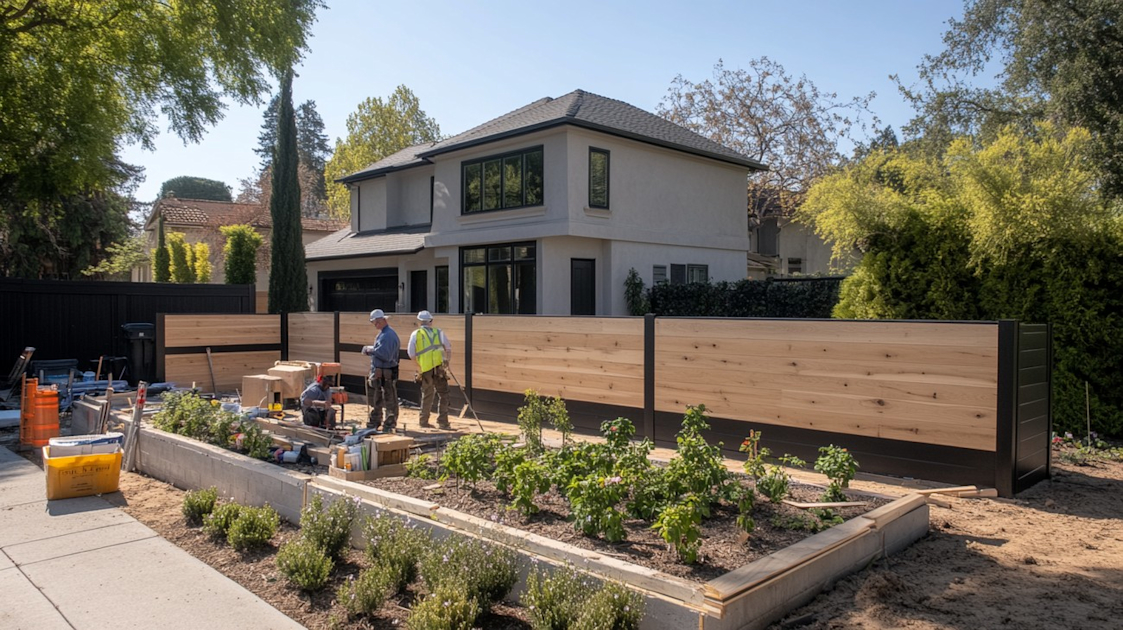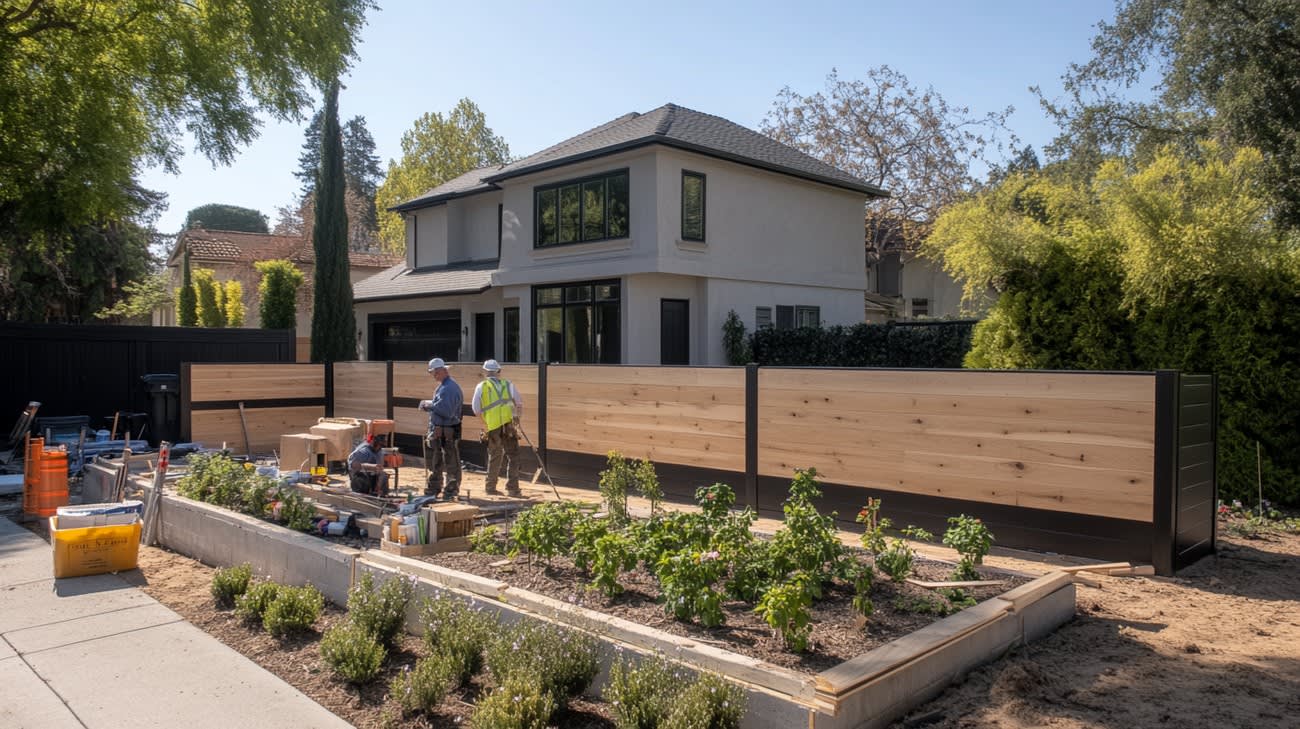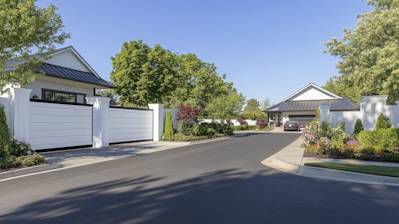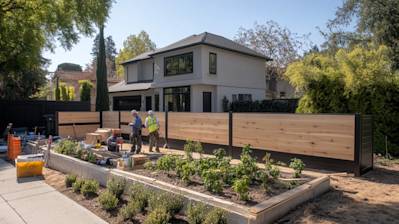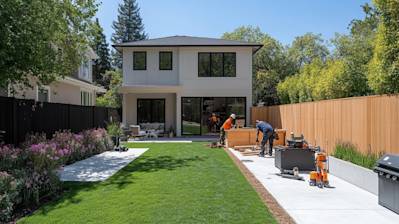Understanding the world of fence installation can seem like a daunting task, but have no fear – we’re here to guide you through every step of the process. From different fence types and materials to installation techniques and maintenance, we're your one-stop-shop for all things 'fence installation'.
The Importance of Proper Fence Installation
Fences offer more than merely defining your property line. They provide privacy, enhance your home’s curb appeal, and add a layer of security. However, these benefits can only be fully realized with a properly installed fence. Without proper fence installation:
- Your fence might not last as long as it should
- Your fence could be less effective
- It could cost more in long-term maintenance
With that understood, let's delve into the key aspects of fence installation.
Types of Fences and Materials
There exist numerous options when it comes to fence types and materials. Your choice will largely depend on your fencing needs, your budget, and the aesthetic you're going for.
1. Wood Fences
Wooden fences are greatly loved for their classic look, versatility, and relative affordability. With proper care, a wooden fence can last for many years.
2. Vinyl Fences
Vinyl fences are a popular choice for homeowners who want a low-maintenance, durable, and yet stylish fencing solution.
3. Metal Fences
From wrought iron to aluminum, metal fences offer robustness and elegance. They can be a bit costlier but require little maintenance and can last a lifetime.
Preparation for Fence Installation
Proper preparation is essential to ensure a smooth fence installation process. Some of the things you need to consider include:
- Determining Your Property Line: You'll need to know exactly where your property borders are before you start digging.
- Getting Required Permits: Check your local building codes and homeowners association rules to ensure you're allowed to erect a fence and adhere to their stipulated fence height and design parameters.
- Preparing the Ground: Make sure your land is level and devoid of rocks, tree roots, and other obstructions that could make fence installation challenging.
Step-by-Step Guide to Fence Installation
Installing a fence might seem like a challenging task, but when broken down into steps, it’s pretty manageable.
1. Mark Your Fence Line
Start by marking exactly where the fence will go. Use stakes to mark the corner points and then use string to line out the rest of the fence.
2. Dig Post Holes
When you know where your fence line is, dig post holes, usually about three feet deep, ensuring they align with your marked fence line.
3. Install Fence Posts
Fill the first few inches of your post holes with gravel, then insert your fence posts, ensuring they're level before you secure them with concrete.
4. Install Fence Panels
Once the fence posts are securely in place, attach your fence panels section by section until the entire fence is complete.
Keep in mind that the installation process might differ depending on the type of fence you choose.
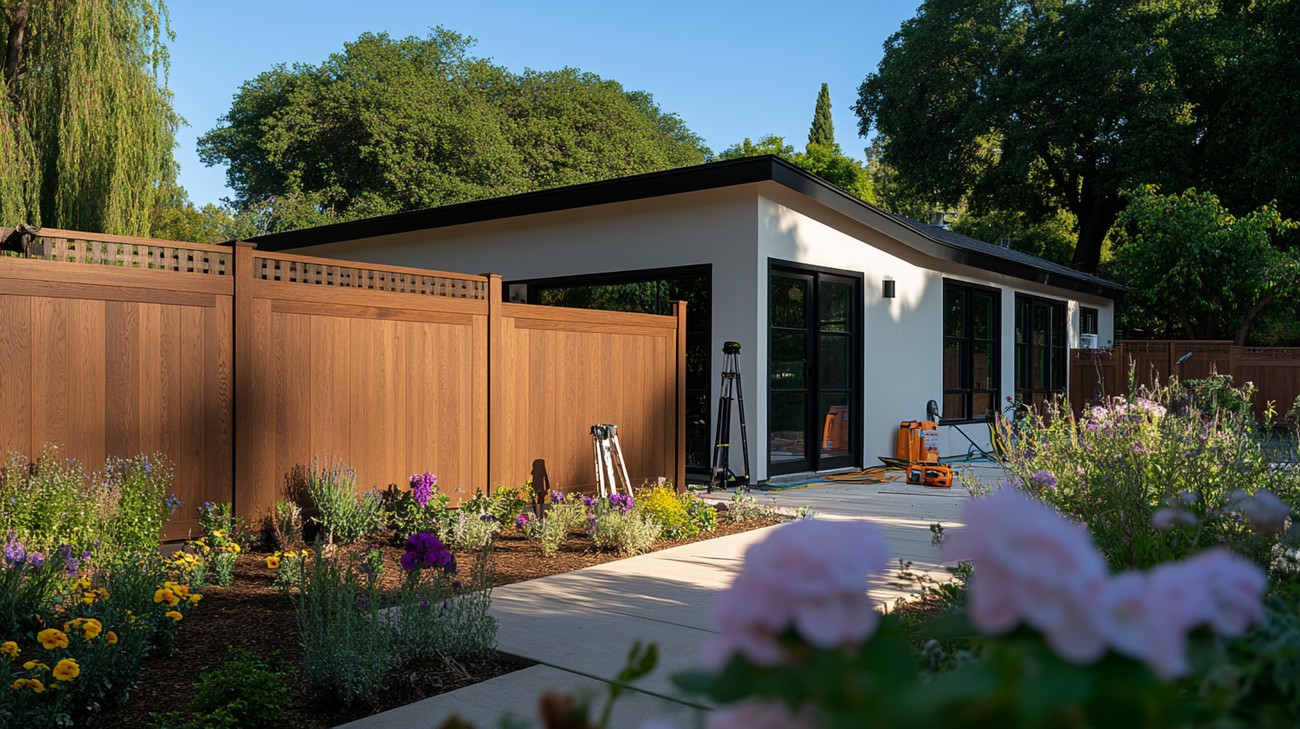
Frequently Asked Questions about Fence Installation
What are the standard sizes available in fence panels?
Fence panels commonly come in widths of 6 or 8 feet. Heights can range widely, from 3 feet to over 6 feet. However, it's important to note that the size should ideally be chosen depending on the purpose of the fence and any local regulations or homeowners association rules.
Do I need a building permit to install a fence?
The need for a building permit for fence installation largely depends on your local regulations. Many cities and municipalities require permits, especially for fences of a certain height or type. It's always best to consult with your local planning or building department before starting your fence installation project.
Can I install a fence myself or do I need professional assistance?
While you certainly can install a fence on your own, it's a job that requires specific tools, knowledge, and expertise. Factors such as post spacing, ensuring the fence is level, and the type of soil you're working with can greatly impact the installation process. If these considerations seem overwhelming, you may want to hire a professional fence installer.
How long does it usually take to complete a fence installation?
The total time for a fence installation varies based on the length of the fence, the type of fence being installed, and the specific conditions of your property. However, for an average suburban property, fence installation can typically take between one to three days.
How much does fence installation cost?
The cost of fence installation can greatly vary based on the type of fence, the length, and whether you’re installing it yourself or hiring a professional. On average, fence installation can cost anywhere from $13 to $50 per linear foot. However, this is just an estimate and actual costs may vary.
Should the fence posts be set in concrete?
Yes, for most types of fences, it's advisable to set the fence posts in concrete. The concrete provides a stable base and helps prevent the fence post from moving or becoming unstable over time.
Does the type of soil affect the fence installation process?
Yes, the type of soil does have an impact on the fence installation process. For instance, sandy or loose soil might not offer the same strength and stability as compact soil. Therefore, you may need to use concrete or specific installation techniques depending on your soil type.
How much space should be between fence posts?
The spacing between fence posts generally depends on the type of fence you're installing. However, a good rule of thumb is to space the posts 6 to 8 feet apart for most types of fences.
Can I install a fence over my property line?
It's always recommended that you install your fence within your property boundaries. Trespassing over your property line when installing your fence may lead to disputes with neighbors or even legal issues. Consider hiring a surveyor prior to your fence installation project to clearly define your property lines.
How do I maintain my fence after installation?
Maintenance depends on the material of the fence. Wood fences might need a sealant or paint, while metal fences may need rust protection. Regular cleaning and assessment for damage will also help in maintaining any type of fence.

Pros of Fence Installation
Enhance Aesthetic Appeal
Fence installation can significantly enhance the aesthetic appeal of your property. With numerous styles, designs, and materials available, you can choose one that complements your home, garden, or firm. A well-selected and correctly installed fence can revamp the look of your facade, giving it a cozy, elegant, or modern touch depending on your preference.
Property Demarcation
Installing a fence makes it easy to demarcate your property. It can help prevent boundary disputes with your neighbors by clearly outlining your property's reach.
Security and Privacy
A fence can enhance your home's security level, keeping intruders and stray animals at bay. It provides a physical barrier to entry, ensuring peace of mind. Installing a high fence with secure locks can deter burglars, enhancing your property's safety. Additionally, fences ensure privacy, allowing you to enjoy your outdoor space without fear of being watched.
Increase Property Value
Fences can potentially increase the value of your property. If well-maintained, they can be a selling point prospective buyers may consider. A secure, private, and attractive home is appealing to any homeowner.
Shelter and Protection
A properly installed fence can provide protection against the elements, such as strong winds, driving rain, and harsh sun. It can also protect your garden plants from being eaten up by wandering herbivores.
Noise Reduction
If your property is near a busy street or noisy neighborhood, a solid fence can act as a sound barrier, reducing noise pollution and providing a quieter environment.
Cons of Fence Installation
Installation Costs
One of the main disadvantages of fence installation is potentially high costs. Depending on the type of fence you prefer (wooden, vinyl, aluminum, wrought iron, etc.) and its design complexity, costs can vary. Also, labor costs must not be overlooked, as installing a fence can be labor-intensive and time-consuming.
Maintenance Cost and Efforts
Another downside is maintenance. Wooden fences require regular painting or staining to prevent decay and ward off pests. On the other hand, metal fences can rust and may require periodic rust-removal and repainting. Cost and effort required for fence maintenance can be a significant con.
May Limit Natural Light
Depending on the fence’s height and material, it may limit the amount of natural light that reaches your home or garden. A tall, solid fence might create unwanted shade in some areas of your yard, which can affect your garden plants.
Permit and Restrictions
You may need to obtain a permit before installing a fence. Some communities have restrictions regarding fence height, style, and materials. These regulations can limit your options and add an extra step before you can commence with your fence installation project.
Time Consumption
While the final result might be worthwhile, fence installation is time-consuming. The process involves planning, shopping for materials, preparing the site, and actual installation which can take days or even weeks, depending on the size and complexity of the project.
Impact on Neighbors
While a fence can enhance your property's privacy, it can sometimes negatively impact your neighbors. A wrongly placed or too-high fence can block their view, or create conflict over property lines. Therefore, it is always recommended to discuss your fence installation plans with your neighbors beforehand.
Potential Impact on Wildlife
A fence can inadvertently affect local wildlife. It might prevent certain animals from accessing their natural habitat or food sources, or disrupt local ecosystems. For this reason, responsible fence design and placement is important.

Myths/Misconceptions About Fence Installation
A fence can significantly enhance the appearance, privacy, and security of your home. However, there are many misconceptions about fence installation that can deter people from this rewarding home improvement project. By debunking these myths, you can make an informed decision about your fencing project.
Myth 1: Fence Installation is Simple and Can Be Done By Anyone
Misconception
Many people think fence installation is as simple as digging a hole and putting a post in it. Some homeowners take it as a DIY project without realizing the level of skill involved.
Truth
In reality, fence installation involves meticulous planning and precision. For instance, fence posts need to be placed at exact intervals and depths to ensure stability. Lines must be straight, and the height has to be uniform across the fencing system. Also, different fence materials require specific installation methods. For these reasons, it is often best to hire professionals.
Myth 2: All Fences Are the Same
Misconception
This misconception is particularly prevalent. Many believe that there is no difference in materials used for fencing, and all fences serve the same purpose.
Truth
Fencing materials vary greatly — from wood, metal, vinyl, to composite. Each material has its specific maintenance needs, lifespan, and aesthetic appeal. For instance, wood fences need regular painting or staining, while vinyl fences require less maintenance.
Myth 3: Fences Last Forever
Misconception
Once installed, many think that fences will last a lifetime without any maintenance.
Truth
Like any other component of your home, fences are subjected to weather conditions, and natural wear and tear. The life of your fence significantly depends upon the material used and how well it is maintained. Wooden fences may need to be replaced every 15 years or so, while metal or vinyl fences may last much longer with correct care.
Myth 4: You Can Install a Fence Anywhere on Your Property
Misconception
Some homeowners think they can install a fence wherever they please on their property.
Truth
Before you install a fence, you need to know your property lines. Installing a fence on your neighbor's property, even unknowingly, can lead to complex legal issues. Also, some regions have ordinances regarding fence height, design, and materials used. Always check local regulations and consult with a professional if unsure.
Myth 5: Installing a Fence Will Negatively Affect Landscape
Misconception
A popular belief is that installing a fence can be damaging to the existing landscape, uprooting plants or disturbing lawn aesthetics.
Truth
A professional fence installation company will ensure minimal disturbance to your landscape while installing a fence. Moreover, a range of fences can even enhance the landscape when selected and placed carefully.
Myth 6: Fences Are Bad for Relationships with Neighbors
Misconception
"The fences make bad neighbors" theory is based on the belief that installing a fence symbolizes a desire for isolation or interest in privacy, potentially creating conflicts.
Truth
Healthy communication with your neighbors about your intention to install a fence can prevent misunderstandings. In reality, fences often define property boundaries clearly, leading to fewer disputes over property issues.
These are just a few of the common misconceptions about fence installation. Always consult with a professional when in doubt, as an expert in the field can provide accurate information and guidance.
Summary
So, that's pretty much the scoop on fence installation. It may sound like a daunting task, but with the correct preparation and tools, you can give your property a major upgrade. Do remember to check your local codes and regulations before you dig that first post hole. This helps avoid any fines and unneeded headaches. It's also critical to think about the purpose of your fence. Privacy, aesthetics, or setting boundaries for pets and kids - every purpose has a fence style that fits it best.
Fence installation can be a great do-it-yourself project for the homeowner who enjoys a bit of a weekend challenge. But don't be fooled, while the process can be rewarding, it also requires a fair amount of work and time. If this doesn't sound like your cup of tea, there are plenty of professionals out there who spend their days building fences and can make quick work of it. It might cost more, but remember, time is money too.
No matter whether you decide to tackle the fence installation yourself or hire a pro, knowing something about the process is always a good idea. It'll help you understand what's going on and enable you to communicate your wishes clearly. In the end, having a sturdy, well installed fence can not only provide you privacy and security but also substantially add to your property value. There's a lot to consider, but with proper planning, the ideal fence is within your reach!
About Ornamental Solutions
Ornamental Solutions is your local, friendly go-to business in Sacramento, CA, specializing in creating and supplying beautiful, custom ornamental designs for both residential and commercial spaces. From intricate railings to eye-catching lawn and garden ornaments, we have spent years mastering our craft and providing top-notch quality products that will make your space stand out! Our dedicated team's rich experience and unyielding passion for design ensure that every detail is meticulously taken care of, resulting in a final product that you'll love. With Ornamental Solutions, expect to bring a whole new level of aesthetic appeal to your home or business!

